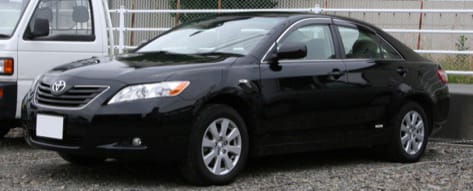In this unit, we’ll be looking at the different tenses of English in more depth and how to apply them. Let’s start with the present. So what does “present” mean? Present means something that happens right now, at this moment.
Although some sentences in present time talk about actions and information that happens right at this moment, they also connect the past and the future to the present.
Present Time: The Simple Present
First let’s look at the Simple Present. The simple present is used to show actions, events, or states that happen habitually or as a general rule.
- Toys cost money (state)
- Car dealers expect you to bargain (general rule)
- “I cannot lower the price any further,” the dealer says (action)
We also use the simple present to narrate events in sequence.

My mother finds a beautiful rug and asks the price.
Past to Present Time: The Present Progressive
The present progressive is used to show actions, events, or states that are in progress at the moment (not finished). Follow the guideline to form present progressive sentences:
From a Time in the past until now.
| Subject | Am / Is / Are | Base Form + -ING | |
| A tourist | is | admiring | the beautiful oriental rugs on display |

My mother is admiring the beautiful rugs put on display. (My mother was looking at the rugs a few moments ago, and is still looking at them now.)

My friend has a black Toyota (The person owned a Toyota and still does.)
Note: Stative verbs are NOT usually used in the progressive. These verbs include have, believe, own, want, like, need, know, love. We’ll touch on what stative verbs are later in the unit.
Exercise
Open the exercise to begin the activity. Follow the instructions in the document.